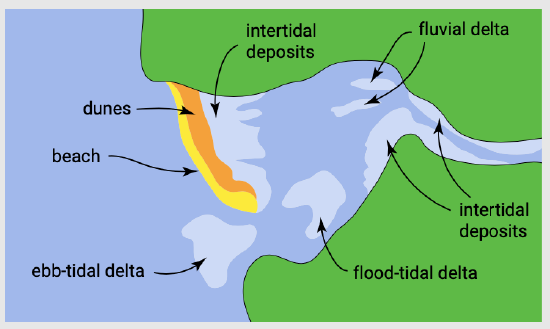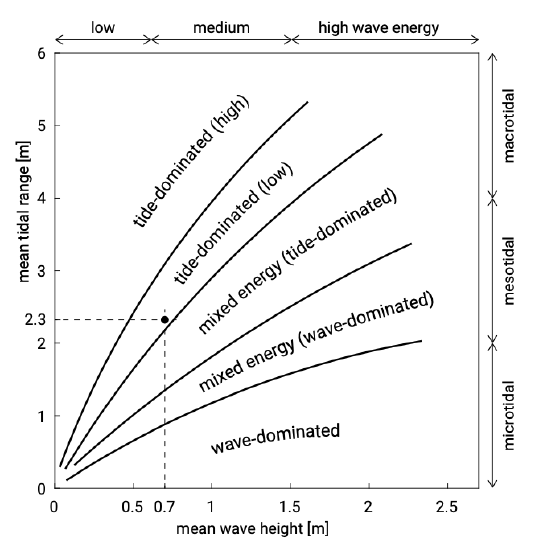9.2.2: Hydrodynamical classification
- Page ID
- 16397
\( \newcommand{\vecs}[1]{\overset { \scriptstyle \rightharpoonup} {\mathbf{#1}} } \)
\( \newcommand{\vecd}[1]{\overset{-\!-\!\rightharpoonup}{\vphantom{a}\smash {#1}}} \)
\( \newcommand{\id}{\mathrm{id}}\) \( \newcommand{\Span}{\mathrm{span}}\)
( \newcommand{\kernel}{\mathrm{null}\,}\) \( \newcommand{\range}{\mathrm{range}\,}\)
\( \newcommand{\RealPart}{\mathrm{Re}}\) \( \newcommand{\ImaginaryPart}{\mathrm{Im}}\)
\( \newcommand{\Argument}{\mathrm{Arg}}\) \( \newcommand{\norm}[1]{\| #1 \|}\)
\( \newcommand{\inner}[2]{\langle #1, #2 \rangle}\)
\( \newcommand{\Span}{\mathrm{span}}\)
\( \newcommand{\id}{\mathrm{id}}\)
\( \newcommand{\Span}{\mathrm{span}}\)
\( \newcommand{\kernel}{\mathrm{null}\,}\)
\( \newcommand{\range}{\mathrm{range}\,}\)
\( \newcommand{\RealPart}{\mathrm{Re}}\)
\( \newcommand{\ImaginaryPart}{\mathrm{Im}}\)
\( \newcommand{\Argument}{\mathrm{Arg}}\)
\( \newcommand{\norm}[1]{\| #1 \|}\)
\( \newcommand{\inner}[2]{\langle #1, #2 \rangle}\)
\( \newcommand{\Span}{\mathrm{span}}\) \( \newcommand{\AA}{\unicode[.8,0]{x212B}}\)
\( \newcommand{\vectorA}[1]{\vec{#1}} % arrow\)
\( \newcommand{\vectorAt}[1]{\vec{\text{#1}}} % arrow\)
\( \newcommand{\vectorB}[1]{\overset { \scriptstyle \rightharpoonup} {\mathbf{#1}} } \)
\( \newcommand{\vectorC}[1]{\textbf{#1}} \)
\( \newcommand{\vectorD}[1]{\overrightarrow{#1}} \)
\( \newcommand{\vectorDt}[1]{\overrightarrow{\text{#1}}} \)
\( \newcommand{\vectE}[1]{\overset{-\!-\!\rightharpoonup}{\vphantom{a}\smash{\mathbf {#1}}}} \)
\( \newcommand{\vecs}[1]{\overset { \scriptstyle \rightharpoonup} {\mathbf{#1}} } \)
\( \newcommand{\vecd}[1]{\overset{-\!-\!\rightharpoonup}{\vphantom{a}\smash {#1}}} \)
\(\newcommand{\avec}{\mathbf a}\) \(\newcommand{\bvec}{\mathbf b}\) \(\newcommand{\cvec}{\mathbf c}\) \(\newcommand{\dvec}{\mathbf d}\) \(\newcommand{\dtil}{\widetilde{\mathbf d}}\) \(\newcommand{\evec}{\mathbf e}\) \(\newcommand{\fvec}{\mathbf f}\) \(\newcommand{\nvec}{\mathbf n}\) \(\newcommand{\pvec}{\mathbf p}\) \(\newcommand{\qvec}{\mathbf q}\) \(\newcommand{\svec}{\mathbf s}\) \(\newcommand{\tvec}{\mathbf t}\) \(\newcommand{\uvec}{\mathbf u}\) \(\newcommand{\vvec}{\mathbf v}\) \(\newcommand{\wvec}{\mathbf w}\) \(\newcommand{\xvec}{\mathbf x}\) \(\newcommand{\yvec}{\mathbf y}\) \(\newcommand{\zvec}{\mathbf z}\) \(\newcommand{\rvec}{\mathbf r}\) \(\newcommand{\mvec}{\mathbf m}\) \(\newcommand{\zerovec}{\mathbf 0}\) \(\newcommand{\onevec}{\mathbf 1}\) \(\newcommand{\real}{\mathbb R}\) \(\newcommand{\twovec}[2]{\left[\begin{array}{r}#1 \\ #2 \end{array}\right]}\) \(\newcommand{\ctwovec}[2]{\left[\begin{array}{c}#1 \\ #2 \end{array}\right]}\) \(\newcommand{\threevec}[3]{\left[\begin{array}{r}#1 \\ #2 \\ #3 \end{array}\right]}\) \(\newcommand{\cthreevec}[3]{\left[\begin{array}{c}#1 \\ #2 \\ #3 \end{array}\right]}\) \(\newcommand{\fourvec}[4]{\left[\begin{array}{r}#1 \\ #2 \\ #3 \\ #4 \end{array}\right]}\) \(\newcommand{\cfourvec}[4]{\left[\begin{array}{c}#1 \\ #2 \\ #3 \\ #4 \end{array}\right]}\) \(\newcommand{\fivevec}[5]{\left[\begin{array}{r}#1 \\ #2 \\ #3 \\ #4 \\ #5 \\ \end{array}\right]}\) \(\newcommand{\cfivevec}[5]{\left[\begin{array}{c}#1 \\ #2 \\ #3 \\ #4 \\ #5 \\ \end{array}\right]}\) \(\newcommand{\mattwo}[4]{\left[\begin{array}{rr}#1 \amp #2 \\ #3 \amp #4 \\ \end{array}\right]}\) \(\newcommand{\laspan}[1]{\text{Span}\{#1\}}\) \(\newcommand{\bcal}{\cal B}\) \(\newcommand{\ccal}{\cal C}\) \(\newcommand{\scal}{\cal S}\) \(\newcommand{\wcal}{\cal W}\) \(\newcommand{\ecal}{\cal E}\) \(\newcommand{\coords}[2]{\left\{#1\right\}_{#2}}\) \(\newcommand{\gray}[1]{\color{gray}{#1}}\) \(\newcommand{\lgray}[1]{\color{lightgray}{#1}}\) \(\newcommand{\rank}{\operatorname{rank}}\) \(\newcommand{\row}{\text{Row}}\) \(\newcommand{\col}{\text{Col}}\) \(\renewcommand{\row}{\text{Row}}\) \(\newcommand{\nul}{\text{Nul}}\) \(\newcommand{\var}{\text{Var}}\) \(\newcommand{\corr}{\text{corr}}\) \(\newcommand{\len}[1]{\left|#1\right|}\) \(\newcommand{\bbar}{\overline{\bvec}}\) \(\newcommand{\bhat}{\widehat{\bvec}}\) \(\newcommand{\bperp}{\bvec^\perp}\) \(\newcommand{\xhat}{\widehat{\xvec}}\) \(\newcommand{\vhat}{\widehat{\vvec}}\) \(\newcommand{\uhat}{\widehat{\uvec}}\) \(\newcommand{\what}{\widehat{\wvec}}\) \(\newcommand{\Sighat}{\widehat{\Sigma}}\) \(\newcommand{\lt}{<}\) \(\newcommand{\gt}{>}\) \(\newcommand{\amp}{&}\) \(\definecolor{fillinmathshade}{gray}{0.9}\)Following our preferred process-based classification, we could make a slightly different distinction between the different basin types than in Sect. 9.2.1.
Tidal basins (estuaries, bays, lagoons) are of course tide-dominated, see Sect. 2.7.1. The influence of the tide is evident from tidal current ridges, extensive salt marshes and tidal flats. In tidal basins with an extremely strong tide (amplitudes of the order of 10 m) the tidal wave is deformed so strongly that a tidal bore may develop (see Intermezzo 5.7). Examples of such basins are the Amazon, the Qiantang and the Severn.
We can distinguish between tidal basins with and without a strong river influence:
- Examples of tidally dominated coastal systems with strong river influence are the estuaries of the Western Scheldt, the Thames, the Elbe (all three in the winter season), the Seine, the Yangtze, the Mekong, the Ganges-Brahmaputra, the Fly River, Chesapeake Bay and the Rio de la Plata;
- Examples of tidal basins without strong river influence are the (eastern) Wadden Sea, the (present) Eastern Scheldt, the Gulf of St. Lawrence, the Colorado River and San Francisco Bay (the latter two both in summer).
In the entrance area of the basins (the inlet, see Intermezzo 9.2), which is maintained by the tide, wave and tidal influences are combined. The tidal range outside an inlet depends primarily on the ocean tides and their interaction with the continental shelf. Micro-tidal, meso-tidal and macro-tidal ranges can be distinguished (see Sect. 4.4.1). The wave conditions are generated further seaward and thus independently of the inlet. Wave energy can be classified as low, medium and high according to Sect. 4.3.1. Since both wave energy and tidal energy in the entrance area of basins are independent of the inlet system configuration, they are very suitable to be used for inlet classification.
Note that the term ‘tidal inlet’ generally refers to an opening in the shore that provides a connection between the ocean or sea and a basin and that is maintained by tidal currents. Alternatively, the term ‘inlet’ is used in a broader sense to describe the entire morphological system consisting of the entrance itself, the ebb-tidal delta (outside) and the flood basin with possibly a distinct flood-tidal delta. In these lecture notes, we want to make a clear distinction between the two definitions and will use the term inlet only to refer to the short, narrow waterway that lets the tide in (the inlet or gorge or throat). The gorge is usually dominated by a main channel, but some are split by a shoal or a small island (cf. the Frisian Inlet, between the isles of Ameland and Schiermonnikoog in the West Frisian Wadden Sea). We use the term tidal inlet system to refer to the combined system of inlet, ebb-tidal delta and basin.

Tidal inlets mostly exist at places where there are breaks in a barrier coast. The term tidal inlet is generally not used for entrances to estuaries or bays with large unconstricted mouths, such as the Western Scheldt, although the tide may enter through inlet channels cutting through sand shoals. We will just speak of an estuary entrance or mouth. Entrances to estuaries along wave dominated coasts or lagoons may also be constricted by wave-built barrier spits (Fig. 9.3 and Ch. 8). In that case it makes sense to speak of an inlet.

Hayes (1979) and Davis Jr. and Hayes (1984) distinguish five classes from wave-dominant to tide-dominant based on the above mentioned tidal range and wave energy classification (see Sect. 4.4.2). Each class develops its own specific morphologic features. For instance, in Sects. 9.3 and 9.4 we will see that the relative sizes of the flood- and ebb- tidal deltas and the mechanism for sand-bypassing of entrances are dependent on the relative wave/tide dominance. Barrier islands are typically wave-built features and the entrance areas to barrier tidal inlet systems (see nr 7 in Fig. 2.42) are typically mixed energy or wave-dominant systems. As an example, Fig. 9.4 classifies the Friesche Zee-gat, one of the inlets of the Dutch Wadden Sea as a mixed energy environment. The Dutch Delta Coast can be classified as a mixed energy environment as well.


